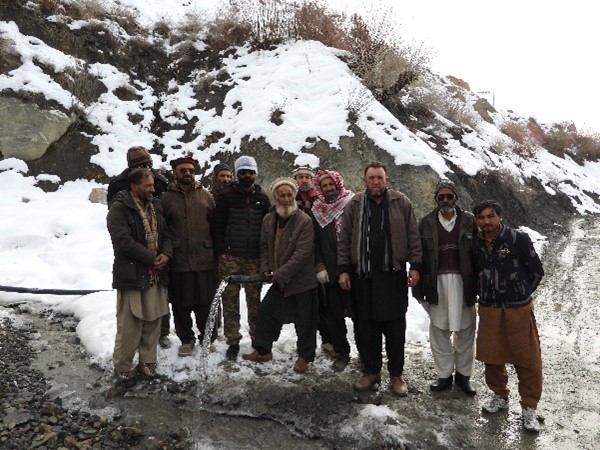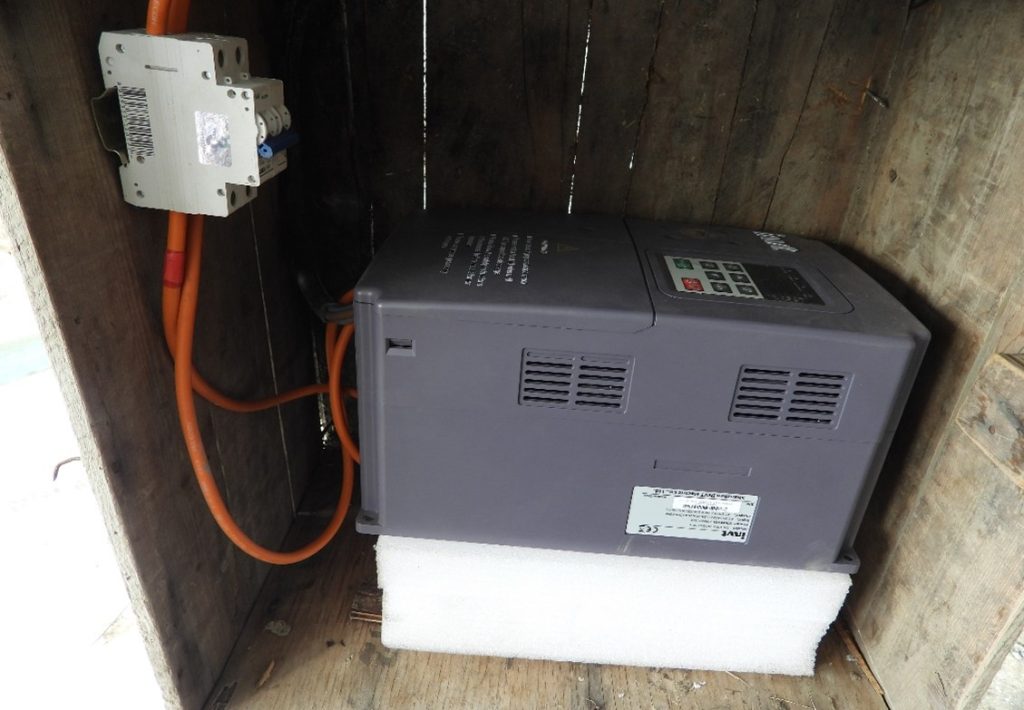The main climate adaptation initiatives implemented by SLF included water resource development and management, watershed management including check daming, plantation of indigenous forest and fruit trees and establishment of closures, livestock vaccination and management, fruit processing, honeybee keeping, conservation tourism. Some of the activities including forest and fruit plantation, promotion of LPG and energy efficient stoves, rehabilitation of waste/barren land by installing solar pumps are helpful for climate adaptation as well as mitigation.
Water management:
Most of the SLF program sites fall in Sub alpine scrub ecosystem, having very fragile vegetation. Due to over grazing these rangelands are degraded. After signing the agreement with VCDOs, water irrigation channels are constructed or water is transmitted through pipes. The activity is designed to improve the degraded rangelands.


Establishment of Closures:
Free and unrestricted grazing, increased population of livestock specially goats, fodder harvesting, unsustainable collection of medicinal plants and deforestation activities to meet timber and fuel-wood needs are amongst the major factors hindering natural regeneration especially in the high mountainous regions of Pakistan. Rehabilitation of degraded high-altitude forest is very difficult as the plantation drive is very expensive and time consuming, therefore, protection of the depleted forests from grazing, lopping and cutting through social fencing is the most economic and effective way of promoting natural regeneration. Due to favourable climatic conditions and availability of sufficient seed source, i.e. mother trees, the closure of the area for natural regeneration is the appropriate and most cost-effective option. The degraded forest area is closed against grazing for consecutive 3-5 years to support the recovery of landscape, where the most endangered species (both plants and animals) will also be the focus to achieve integrated natural resource management. In SLF project valleys, closures of 30-60 hectares each are established after the consultation and signing of Agreement with the respective communities. Community forest guards nominated by the local communities through resolution are hired one for each closure.


- Conservation Tourism
Ecotourism facilities including Tourists Information/ Facilitation Center, Wildlife View/ Watching point and Glamping site are established after developing Conservation tourism plans for the area. The replacement of glamping sites with cemented structures assists in climate adaptation.



- Promote energy efficient stoves/ LPG (connections [2 cylinders + stove])/ to reduce dependency on forests for fuel wood
Provision of LPG cylinders to the community to reduce their dependency on forest resources was identified as one of the conservation measures during the community need assessment session in AJ&K. SLF materialized the notion by signing agreement with the VCDO for the implementation of the activity. It provided grant to the community for the purchasing energy efficient stoves and cylinders for LPG usage.


- Rehabilitation of waste/barren land by installing solar pumps
In Chitral Local communities in SLF program sites mostly depend on stream water for irrigation and drinking. In KP, the communities through resolutions expressed their need for water supply scheme by installation of solar pump. SLF conducted feasibility study of the project by involving a civil engineer. Based on the feasibility report, agreements are signed with community/ VCDO of the valley. The grant is deposited in VCSDOs’ joint accounts. Procurement of the equipment and materials is made, installation and civil work is completed for solar pumps. A solar pump benefits about 100 households and 80 hectares of agricultural land is brought under irrigation.



- Develop orchards/ Fruit trees plantation
The SLF sites mostly fall in dry temperate ecological zone and have dry climate which is good for fruit production. The need of fruit trees for plantation is collecting through focus group discussions giving preference to female members of the community and in the form of resolutions from the VCDOs. The SLF facilitates consultation with Agriculture Department for finalizing fruit plants compatible to the area and identifying and arranging fruits varieties of walnut, cherry, Pear, plum, apricot, grapes and mulberry etc. Agreements for fruit trees plantation are signed with VCDOs. The SLF contributes a part of the cost by transferring its share in the account of VCDOs. The representatives of VCDOs and SLF purchases the good quality and grafted fruit plants from public and private nurseries in collaboration with provincial Agriculture Deptt. After transportation, plants are stored till April by digging in the soil. At the onset of the planting season these are distributed among the community. The community share is collected during distribution of the plants. The community members are trained in fruit trees plantation and orchard management including plants training and pruning. VCDOs and the SLF staff finalizes orchards’ location, size and layout, planting system and planting distance. Plantation is completed in April-May. Plantation and its survival rate is monitored by VCDOs and the SLF staff. The VCDOs are guided to maintain record of the initiative every month in the Proceeding register.


- Gabion Walls for land-slide control
To protect community land from damage of land sliding, gabion walls are constructed on the sites identified by VCDOs and selected in consultation with an Engineer.


